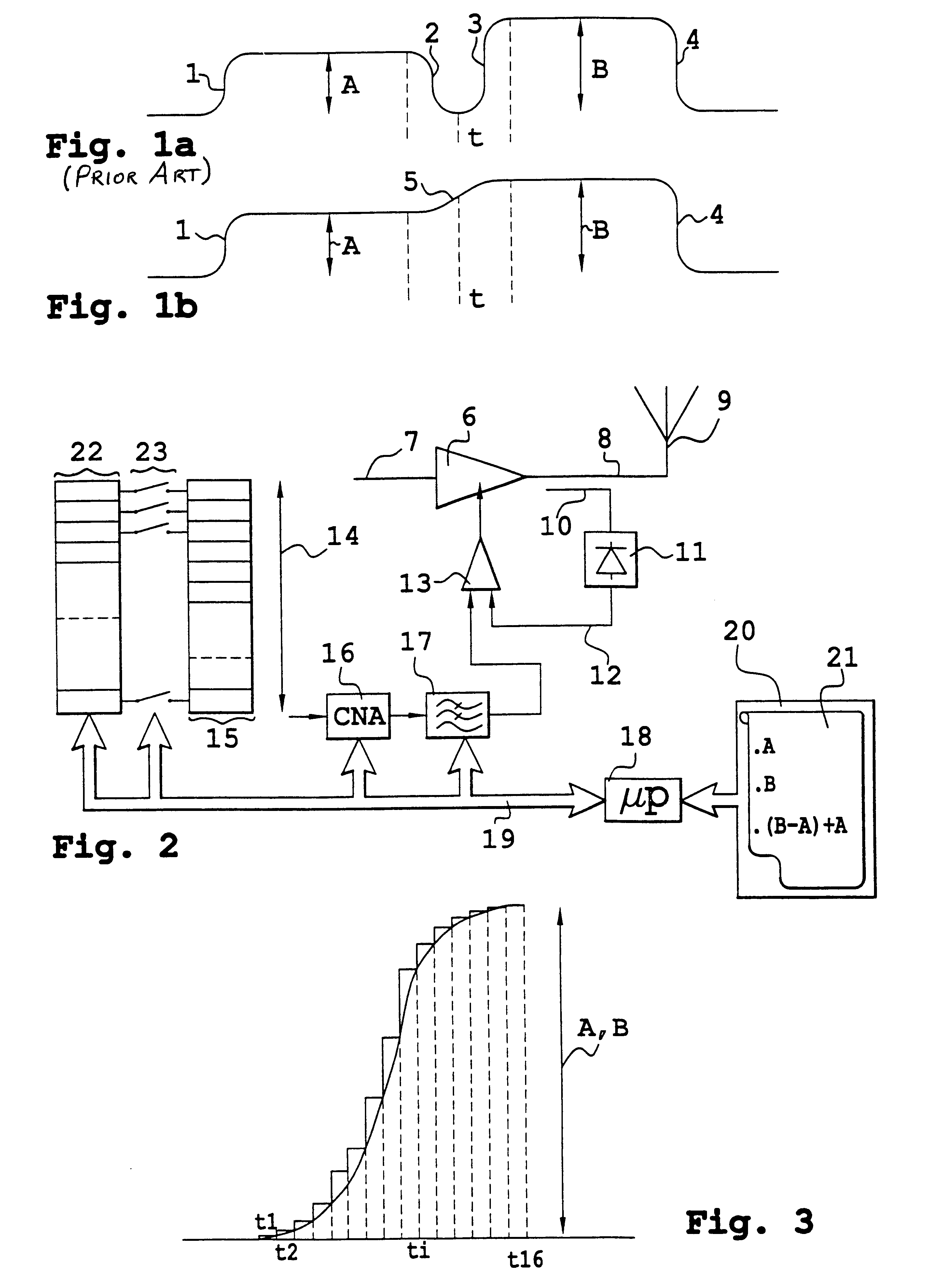Method of transmitting in successive time slots
a technology of successive time slots and transmission methods, applied in power management, multiplex communication, wireless communication, etc., can solve problems such as transmission of prohibited interference, and achieve the effect of reducing interferen
- Summary
- Abstract
- Description
- Claims
- Application Information
AI Technical Summary
Benefits of technology
Problems solved by technology
Method used
Image
Examples
Embodiment Construction
FIGS. 1a and 1b show, respectively for the prior art and for the invention, the nominal power differences that can be imposed in successive time slots if the same base station or the same mobile telephone requires to continue to transmit from one slot to the other. In FIGS. 1a (i.e. in the prior art), the nominal transmitted power is limited to "A" during a first time slot. This value results from communication between the base station and the mobile telephone. During this communication the base station sets a nominal power for the mobile telephone at which it must transmit for its message to be received correctly. Or vice versa. For the channel concerned, the base station and the mobile telephone are therefore restricted to an assigned power A. The assigned power can be different for the base station and for the mobile telephone. What is important is that there is an assigned power. The time slot with amplitude A begins with a rise in power 1 and ends with a fall in power 2. The ne...
PUM
 Login to View More
Login to View More Abstract
Description
Claims
Application Information
 Login to View More
Login to View More - R&D
- Intellectual Property
- Life Sciences
- Materials
- Tech Scout
- Unparalleled Data Quality
- Higher Quality Content
- 60% Fewer Hallucinations
Browse by: Latest US Patents, China's latest patents, Technical Efficacy Thesaurus, Application Domain, Technology Topic, Popular Technical Reports.
© 2025 PatSnap. All rights reserved.Legal|Privacy policy|Modern Slavery Act Transparency Statement|Sitemap|About US| Contact US: help@patsnap.com


